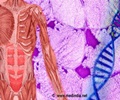Molecular mechanism of defective neuronal migration in FMCDs has been investigated. Focal malformations of cortical development (FMCDs) are a heterogeneous group of brain cortical abnormalities.

‘Molecular mechanism of defective neuronal migration in FMCDs has been investigated. Focal malformations of cortical development (FMCDs) are a heterogeneous group of brain cortical abnormalities.’





The research team previously demonstrated that brain-only mutations in the mechanistic target of rapamycin (MTOR) gene causes focal cortical dysplasia, one major form of FMCDs leading to intractable epilepsy in children. However, the molecular mechanisms by which brain-only mutations in MTOR lead to cortical dyslamination and defective neuronal migration in FMCDs remain unclear. To study the molecular mechanism of brain cortical dyslamination, the research team utilized patients' brain tissues and modeled the MTOR mutation-carrying cell and animal models recapitulating the pathogenesis and symptoms of FMCD patients.
MTOR mutations prevented degradation of the OFD1 protein, one of the negative regulators of ciliary formation. As a result, the OFD1 protein was abnormally accumulated in MTOR mutation-carrying neurons, causing focal cortical dyslamination. By suppressing the expression of the OFD1 protein, the research team was able to rescue the defective formation of primary cilia, leading to the restoration of cortical dyslamination and defective neuronal migration considerably.
Based on these results, the research team is carrying out further research to develop novel therapeutics for patients with FMCDs caused by brain-only mutations.
Source-Eurekalert










